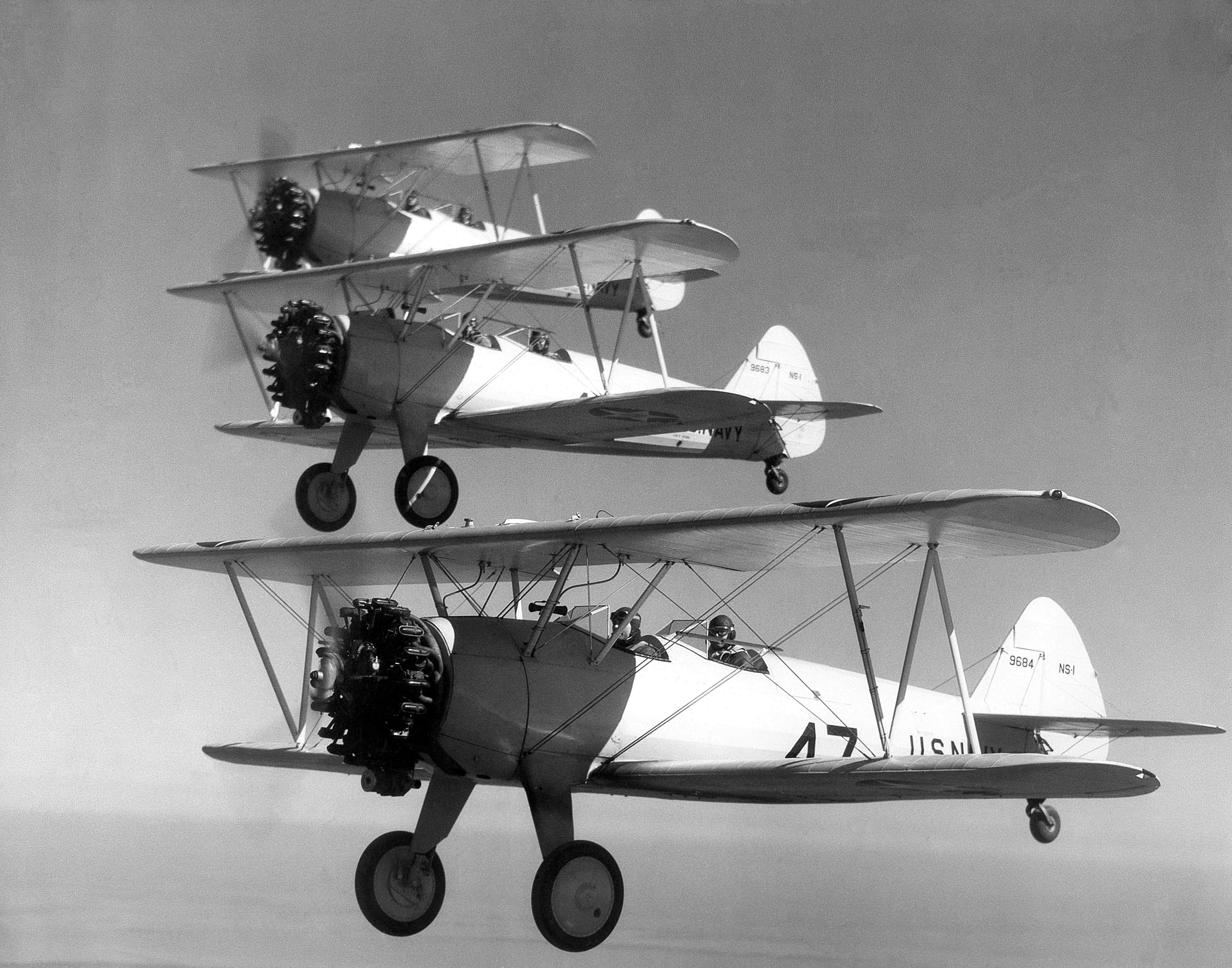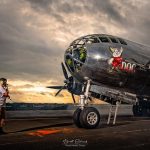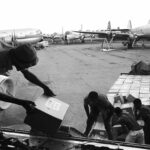“Vintage Aviation News staff did not write this article; the content comes via our partners who wish to help $upport our website.”
The World War II didn’t pass unnoticed by anyone. It involved 61 countries and 80% of humanity. It brought great destruction and intense changes in many life aspects. The pilots were not spared. The war forced them to learn new strategies and technologies. We will look at the evolution of aviator training during WW II and what role it played. Students who learn about the War and military rehabilitation after it may find information the following. Archives and libraries, online resources. museums, and documentary videos dedicated to this global period in human history.
Military Flight Training Programs
Primary flight training programs implemented during World War II
The countries involved in the war developed different ones. In the USA, the Army Air Corps program was introduced. It provided pilots with intensive training. Much attention was paid to teaching flight skills: maneuvers in the air, shooting, and landing.
How did these programs differ from pre-war pilot training methods
Writing academic papers about the World War II, students discover many topics. Below we will consider more than one. No matter what the topic, the essay must be meaningful, and structured. Many students face difficulties along the way. Online services with excellent examples of essays will provide qualified help. For example, StudyMoose. So, students will not lose academic performance. They will be able to use community essay examples and ideas on topics related to the adaptation of military pilots to civilian life and PTSD and SUD among returning veterans to make their articles meaningful and close to the best result. They will also learn new topics for themselves. For example, that one of the biggest differences between pre-war and war aviator training was acceleration. There was a need for mass mobilization of pilots. Thus, the duration of training was shortened and the intensity increased. Training programs were more specialized. There were programs for fighters, night fighters. Also, bombers, and other specialized groups. This made it possible to train pilots for specific tasks.
Key elements and stages of military flight training
These included theoretical training, ground training, and practical flights. Theoretical training:
- study of aerodynamics
- navigation
- strategic planning and other aspects of aviation.
Ground training was conducted using simulators. They simulated flight scenarios. Practical flights were conducted under the supervision of experienced aviator instructors. The latter taught newcomers flight skills and tactics.
Role of simulators and flight instructors in pilot education during the war
Simulators have become an integral part. They allowed aviators to get practical skills without risking their lives. Different types of simulators were developed:
- maneuvering
- visual
- cockpit simulators
They allowed pilots to:
- improve their flying skills
- learn the procedures for taking off and landing
- train to respond to unforeseen situations
Flight instructors also played a major role. They taught flight techniques, tactics, strategy, and maneuvers. They were responsible for evaluating aviators’ progress and identifying their strengths and weaknesses.
Aircraft Technology and Pilot Training
The influence of technological advancements in aircraft pilot training during WW II
It was immediate and significant. New models of airplanes had to be developed. They had to be faster, more powerful, and more maneuverable. All this required mastering new skills and acquiring new knowledge. Pilots had to adapt to these new technologies and learn their characteristics and capabilities.
Specific challenges pilots faced in adapting to new plane models
Adapting to new plane models required pilots to retrain their skills and learn new ones. This included changes in control, flight characteristics, and plane equipment. Aviators faced the following problems:
- more complex control
- feeling new aerodynamic features
- increased complexity and speed of reaction to new situations
- new flight modes
How were pilots trained to operate advanced systems and weaponry?
The pilots studied the operation of radars, bomb launchers, piloting systems and other equipment. Special simulators became an integral part of aviator training. They allowed simulating various flight and combat scenarios. They taught them how to operate complex systems and use weapons effectively. They provided practical training in a controlled, safe environment. The pilots gained valuable experience before real battle.
The impact of technological progress on piloting safety and efficiency
Technological advances increased the safety and efficiency of pilots. Improved plane was more maneuverable and reliable. New control and weapons systems provided more accurate and efficient operations. It increased the success rate. Technological advances also contributed to the development of training methods. Simulators allowed aviators to learn complex procedures without risking their lives. This reduced the number of accidents.
Navigation and Communication Training
How did navigation techniques and tools evolve during World War II pilot education?
Navigation methods and tools were developing rapidly. They played an important role in preparing aviators for effective navigation flight. And ensuring communication with the command post. Navigation training included the use of various tools. New navigation devices appeared:
- onboard remote navigation devices
- radio compasses
- star-based positioning systems.
What methods were used to train pilots in navigation skills?
The pilots learned to use mapping materials and calculate flight routes. They also studied navigation techniques:
- using markings on the ground
- recognizing landmarks on the earth
- finding their position using navigation devices
How were communication systems and protocols taught to pilots during the war?
New radio sets were introduced. They allowed aviators to communicate over long distances in difficult conditions. Pilots received instructions, transmitted reports. They obtained important information about missions and strategic tasks.
Role of radar and radio navigation in pilot training
The radar systems allowed aviators to detect and track enemy aircraft. They could avoid collisions and detect threats. Pilots also used radio navigation systems, such as the LORAN (Long Range Navigation) system. It helped them to determine their position and execute routes. Radar and radio navigation allowed them to track the movement of enemy forces. Also, to determine their position in difficult conditions, and avoid obstacles.
Military Rehabilitation Program
How pilots were prepared for civilian life
After the end of World War II, rehabilitation programs were developed. They were aimed at helping military pilots transition to civilian life. They focused on preparing pilots for new professions and integration into public life. Aviators were supported in their job search. They also retrained and received new education.
How World War II affected the rehabilitation program
WW II led to new types of injuries and problems faced by veterans. Many aviators returned with amputations and disabilities. Rehabilitation programs were expanded and improved. They took into account the special needs of veterans.
What problems did doctors encounter when treating veterans
Doctors had to address the pilots’ physical and mental health issues. They developed individual rehabilitation plans. They also worked on restoring the pilots’ physical skills:
- motor skills
- motor activity
- control over the devices.
Doctors helped to select prostheses. They provided psychological support to pilots who suffered from post-traumatic stress disorder.
| Aspect | Pre-War Pilot Training Methods | Pilot Training During World War II |
| Flight Training Programs | Teaching the basics of flying, learning to fly small airplanes | Training on military aircraft, special simulators and combat simulators. Teaching air combat tactics and strategy |
| Technological Advancements | Limited availability of aircraft. The focus is on using simpler plane of the period. | Implementation of new technologies and advanced plane models. The pilots gained skills in operating more complex systems and weapons. |
| Navigation and Communication Training | The main methods were based on the use of maps and compasses. Communication was carried out by radio and signal flags. | Implementation of new navigation methods. They included radio navigation and the use of radar to improve the accuracy and efficiency of flights and sights. |
| Operational Training and Combat Readiness | Training of pilots in air combat tactics, use of weapons. Coordination of actions within military formations.
Combat readiness involved providing pilots with the necessary resources. Such as fuel, ammunition, and reserve units. |
Operational training was more intensive. Simulations of combat conditions, tactical training, and special courses on air combat strategy.
Combat readiness was enhanced through the new technologies implementation and improved supply systems. They ensured rapid response and readiness of pilots to perform combat missions. |
“Vintage Aviation News staff did not write this article; the content comes via our partners who wish to help $upport our website.”























